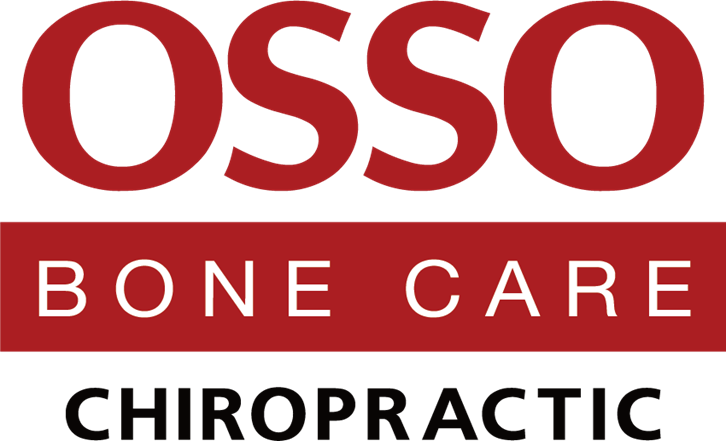Standing Too Long at Work? How It Affects Your Spine and What You Can Do About It
If your job keeps you on your feet all day, you already know that familiar dull ache that settles in your lower back by the end of a shift. Whether you’re a retail store manager greeting customers, a luxury boutique assistant, a high-end salon stylist, a hotel concierge, or a corporate event planner overseeing VIP functions — standing for hours may seem harmless, but it can quietly wear down your spine over time.
Our bodies weren’t designed to stay in one position all day, even if it’s standing. Let’s look at how prolonged standing affects your back, what symptoms to watch out for, and what you can do to prevent long-term spine damage.
How Standing Long Hours Affects Your Spine
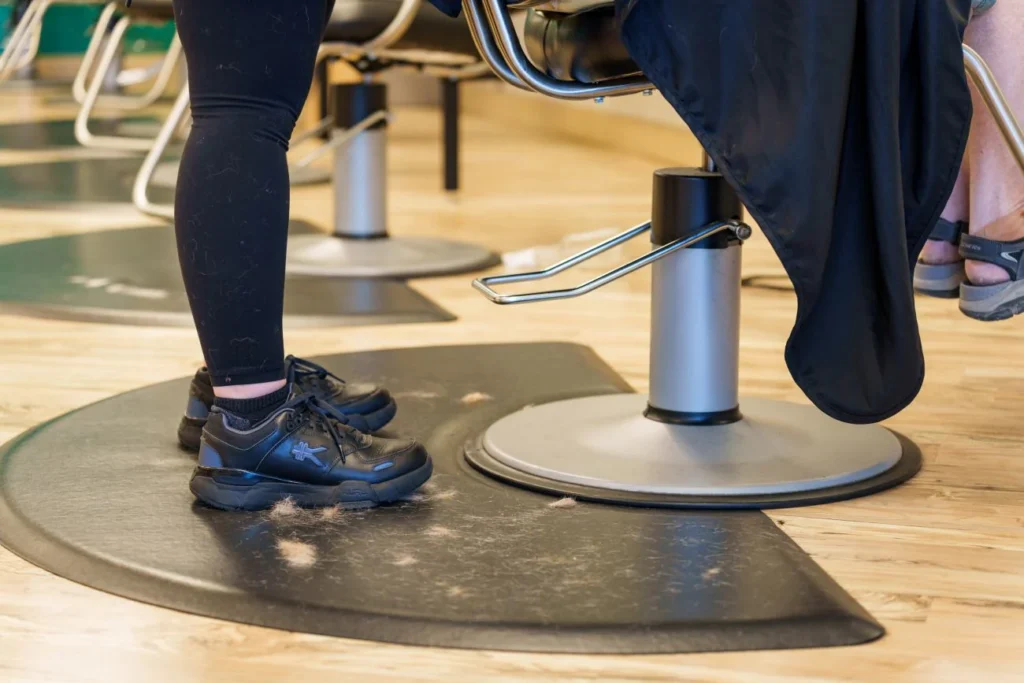
When you stand still for long stretches, gravity and body weight put continuous pressure on your spine, hips, and knees. Over time, this causes spinal compression, where the discs between your vertebrae are squeezed together like a spring.
Muscles in your lower back and legs also tire out, especially if you tend to lean on one side or shift your weight unevenly. Many professionals unconsciously stand with a tilted pelvis or locked knees, which throws off spinal alignment.
Think about it:
A luxury retail advisor might lean slightly forward all day while assisting customers at the counter — increasing lumbar disc pressure.
A chef in a fine-dining kitchen may stand on hard floors for over 10 hours — amplifying fatigue and stiffness in the lower back and legs.
Without proper posture or support, these daily habits can lead to degenerative disc changes, pelvic tilt, lower back pain or chronic muscle strain over the years.
Common Symptoms of Standing-Related Back Pain
Pain from standing too long doesn’t always appear suddenly. It often creeps up slowly, and the symptoms are easy to overlook, at least at first.
You might notice:
- A stiff or dull ache in your lower back after a long shift
- Tight hamstrings or calves that make it hard to bend or stretch
- Burning or tingling sensations down your legs — a warning sign that nerves are being compressed
- Pain relief when you sit or lie down, only to return once you’re back on your feet
- Postural fatigue, where you catch yourself slouching or leaning forward
If these sound familiar, your spine might already be sending you early signals of stress. Ignoring them could allow minor discomfort to evolve into chronic lower back pain or disc issues.
Why Some Working Professionals Develop Back Pain Faster Than Others
Ever wonder why some colleagues can stand all day without issues while others feel sore within hours? Several small factors add up:
1. Footwear
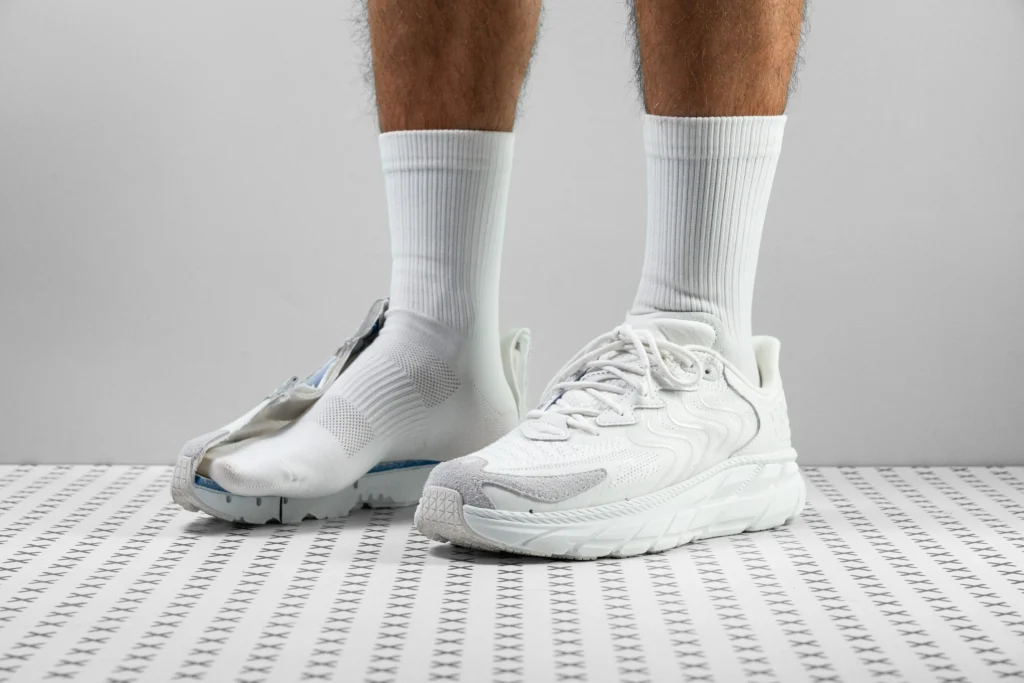
Shoes without proper arch or heel support force your feet to absorb impact all day long. Over time, this creates a ripple effect: your ankles roll inward, your knees lock, and your lower back compensates for the imbalance.
Wearing high heels or narrow-toed shoes worsens this — shifting your center of gravity forward and putting extra strain on your lumbar spine. Hard flooring like concrete or tiles only magnifies the impact.
A study published in Rehabil Nurs found that professionals who stood on hard floors for more than 4 hours daily had significantly higher reports of back and leg pain compared to those using cushioned mats or supportive footwear.
2. Body Weight
Even modest weight differences can affect how your spine handles prolonged standing. Extra weight increases the compressive load on your lumbar discs and joints, especially if that weight sits around the abdomen, pulling the pelvis forward and exaggerating the natural spinal curve. Over time, this can cause anterior pelvic tilt and chronic lumbar tension.
3. Weak Core and Glute Muscles
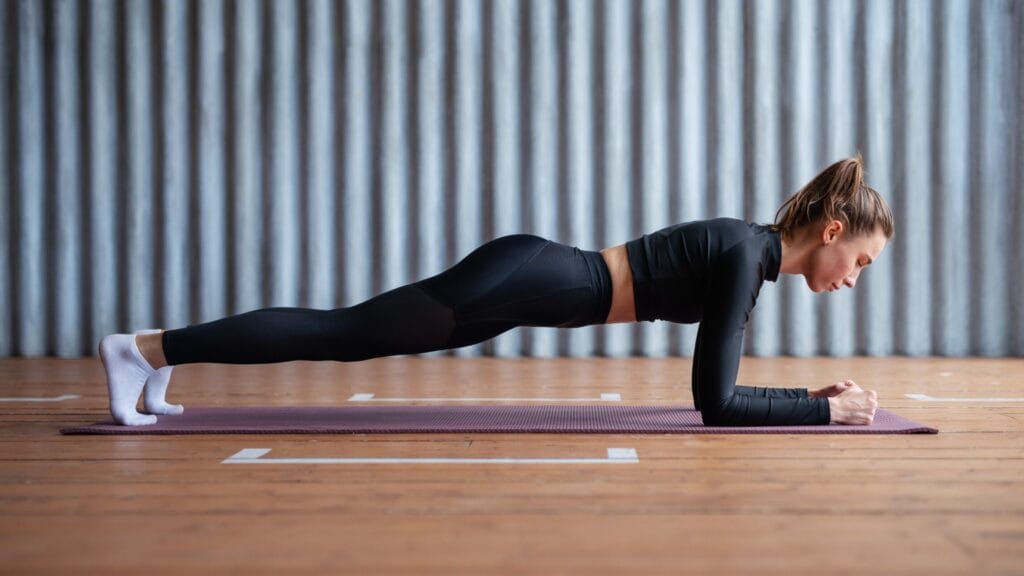
Your core and glutes are like scaffolding for your spine. When they’re weak, your back muscles have to overwork to keep you upright. That constant effort leads to fatigue, stiffness, and imbalance.
Workers who don’t strengthen these key muscles, or who rarely stretch their hip flexors and hamstrings, are more prone to lower back discomfort, even if they have great posture.
Simple strengthening exercises like planks, bridges, and pelvic tilts can drastically reduce long-term back strain for standing workers.
4. Posture Habits
Many people unconsciously lean on one leg, lock their knees, or push their hips forward when they stand. These small habits may feel “comfortable” in the moment but gradually twist spinal alignment.
Over years, this imbalance can lead to uneven muscle development, pelvic rotation, or even mild scoliosis-like shifts. This results in uneven stress on your discs, and a back that tires faster on one side than the other.
5. Fatigue and Recovery Time
Another overlooked factor is recovery. Some workers go from long shifts to long commutes and barely get time to stretch or rest. Without adequate recovery, the muscles never fully release tension, making the next day’s strain worse. Over time, this cycle contributes to chronic tightness and inflammation in the lower back and hips.
When you combine these factors day after day, your back muscles are forced to compensate, often leading to fatigue, stiffness, and poor spinal alignment.
Simple Relief Tips for Standing Jobs
So what can you do if sitting isn’t an option? The goal is to move often, support your body, and give your spine regular breaks.
Here’s what helps:
- Shift your weight every few minutes — alternate legs to avoid pressure buildup.
- Use cushioned footwear or anti-fatigue mats if your floor is hard.
- Take micro-breaks every 30–45 minutes to stretch or walk briefly.
- Do gentle stretches for your back, calves, and hips during breaks.
- Hydrate — muscle fatigue worsens when you’re dehydrated.
When standing, keep your shoulders relaxed and your core slightly engaged. Avoid locking your knees, and make sure your feet are shoulder-width apart. These small adjustments can make a big difference over time.
What You Can Do To Support Your Spine
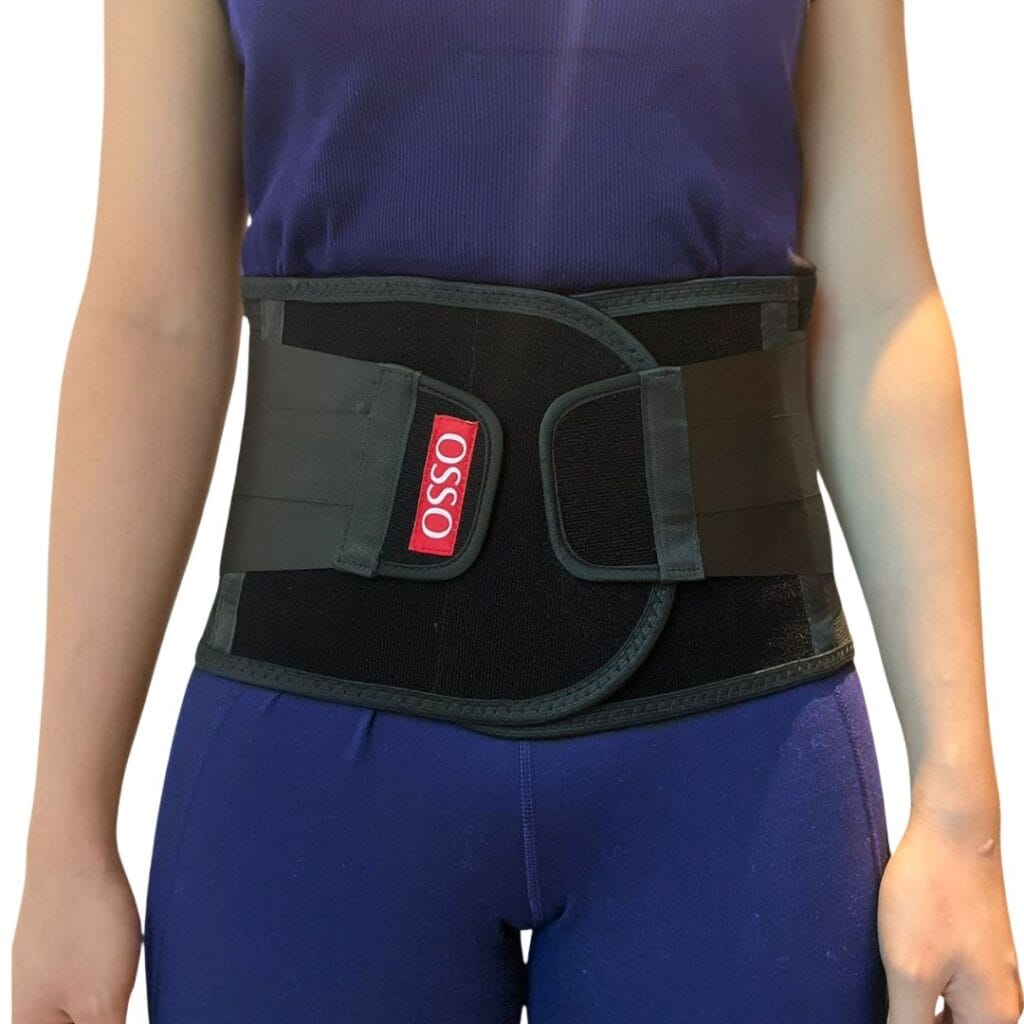
Even with the best posture, standing for long hours still puts stress on the lumbar spine. That’s where lower back support can help.
A lumbar brace works by supporting the natural curve of your spine, helping your muscles maintain proper posture without overworking. It distributes weight evenly and reduces fatigue — perfect for those whose jobs don’t allow frequent sitting.
The Osso L5 Lumbar Support is a chiropractor-endorsed brace specifically designed for workers who spend most of the day standing. Developed with expert input, it provides targeted compression around the lower back to improve posture and relieve pressure on the lumbar discs.
It’s a discreet, comfortable solution that can fit under work uniforms, offering relief without limiting movement. Try our chiropractor-endorsed L5 lumbar brace to see how much lighter your back can feel at the end of your shift.
When to See a Chiropractor
Sometimes, a brace alone isn’t enough, especially if the pain lingers or worsens. You should consult a chiropractor if:
- The pain continues even after rest
- You feel tingling or numbness in your legs
- You struggle to stand up straight after work
- You have recurring tightness or spasms in your lower back
A chiropractor can identify misalignments in your spine and help restore balance using gentle, non-invasive techniques. Treatments like postural alignment therapy, 3D spinal decompression, and pelvic rebalancing can correct the root cause of standing-related pain.
With regular chiropractic sessions, many workers notice improved posture, reduced pain, and greater flexibility within weeks.
Protecting Your Spine for the Long Term with Osso Bone Care
Standing job back pain doesn’t have to be “part of the job.” Your spine deserves care, just like any other part of your body. With the right habits, support, and early treatment, you can stay comfortable and pain-free even in physically demanding work environments.
So the next time your lower back starts to ache after a long shift, don’t just tough it out. Give your spine the support it needs — whether through smarter posture, chiropractic care, or a reliable back brace.
If you spend your day on your feet, take care of your spine before pain takes over. Visit Osso Bone Care Chiropractic in Kuala Lumpur for a professional spinal assessment or try our Osso L5 Lumbar Support today.
